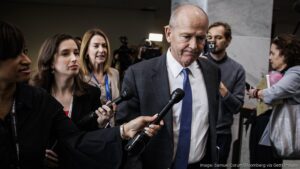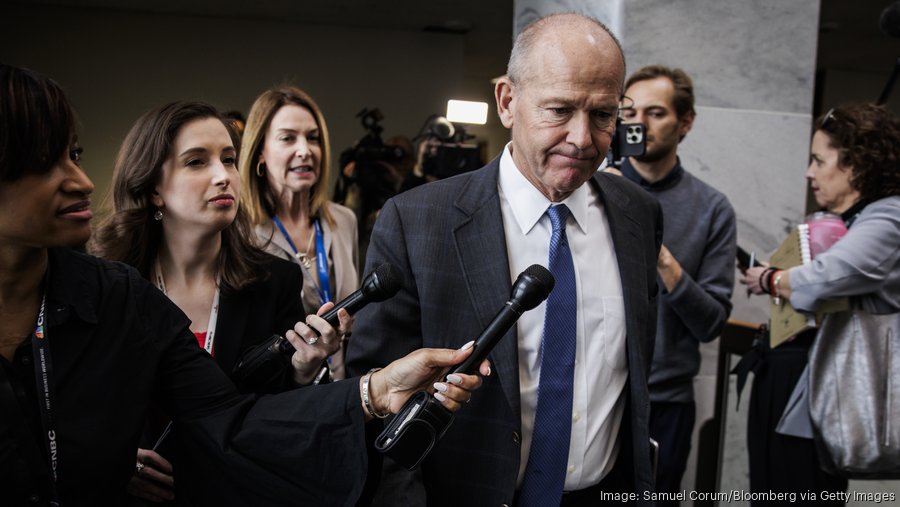Article published in the Philadelphia Business Journal on June 30, 2024.
Listening to Boeing CEO Dave Calhoun respond on June 18 to members of the Senate Permanent Subcommittee on Investigations grilling him about the safety of Boeing aircraft left me with the question: Where was the Boeing board in fulfilling its CEO oversight responsibility?
During Calhoun’s tenure as Boeing’s CEO, a door plug fell off an Alaska Airlines Boeing 737 Max 9 aircraft. On the factory floor, Boeing employees have been told by their supervisors not to report manufacturing quality lapses and have faced intimidation, threats of violence and having their careers derailed if they refused to remain quiet. In an area as mission critical as aircraft safety, it is hard to understand why the Boeing board didn’t hold Calhoun accountable for an organizational culture in which employees were intimidated to not report quality issues.
On March 25, Calhoun announced he will depart Boeing at year-end to allow time for an orderly transition. The poor culture of safety will not change while Calhoun is a lame duck CEO.
Calhoun, who had been a Boeing board member, was appointed CEO in January 2020. The board had fired previous CEO Dennis Muilenburg in the aftermath of the Ethiopian Airlines and Lion Air Boeing 737 Max 8 crashes in 2018 and 2019, in which a total of 346 people were killed.
Those two crashes occurred due to operational problems with the new MCAS system, which controlled the pitch of the aircraft. MCAS was needed to avoid fully redesigning the 737 Max aircraft due to the expense and the time it would take to do so, putting Boeing at a competitive disadvantage to Airbus. Pilots were not informed of the new MCAS system and not trained on it due to the cost and time needed for training.
Helium leaks, which are delaying the return of Boeing’s Starliner space craft currently docked in orbit at the International Space Station, further tarnishes Boeing’s technical reputation. Let’s all hope the two Starliner astronauts return home safely.

Ahead of the June 18 Senate subcommittee hearing, Chairman Richard Blumenthal released a statement, which in part stated, “[Boeing has a] culture that enables retaliation against those who do not submit to the bottom line. A culture that desperately needs to be repaired.”
During his appearance in front of the Senate subcommittee, Blumenthal asked Calhoun, “Have any of your supervisors, your managers, anybody been fired for retaliating against people who speak truth to power, about defects or problems in production? Calhoun responded, “Senator, we have fired people and disciplined people.” Calhoun should have vehemently stated that a culture in which retaliation occurs is abhorrent to him personally and what Boeing stands for.
Boeing needs to emphatically communicate to its employees that the company has zero tolerance for anyone that retaliates against those who report safety concerns. I would hope the fact that those who retaliate are fired is made public within the company to deter others from retaliation.
In a March 20204 column, I wrote about the “Boeing Report” released in February written by 24 experts from the aviation industry commissioned after the 2018 and 2019 crashes of the Max 8 aircraft. The report outlined 23 findings that Boeing needs to address. Four of those key findings are as follows:
No. 1. “Many Boeing employees did not demonstrate knowledge of Boeing’s enterprise-wide safety culture efforts, nor its purpose and procedures.”
No. 4. “Among some employees, [there is] hesitation reporting safety concerns for fear of retaliation.”
No. 13. “Boeing employees across all disciplines and roles expressed concerns over the lasting power of safety programs and initiatives. This raises concerns about [their] sustainability.”
No. 23. “Pilot inputs within Boeing are neither directly nor consistently delivered to the highest level decision [makers when] pilots did not occupy a seat at the table.”
Moving forward, the Boeing board must review progress with Boeing’s new CEO on fixing the issues identified by all of the findings. It’s one thing to hold the CEO accountable after a tragedy occurs. It’s quite another to hold the CEO accountable if progress isn’t made in addressing the issues that could lead to a tragedy.
The Boeing board needs to do a better job on oversight. The company needs to significantly tighten up not only its safety processes and procedures, but also its execution. Boeing needs a mission statement that will resonate with employees and make them personally invested in aircraft safety, be easy to remember and clearly focus everyone’s efforts. The new suggested mission statement: “We build our aircraft as if our kids and grandkids were going to be flying on them.”
Stan Silverman is a former CEO and author of “Be Different! The Key to Business and Career Success.” He is also a speaker, advisor and widely read nationally syndicated columnist on leadership. He can be reached at stan@silvermanleadership.com.

